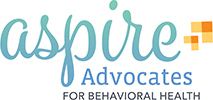WHAT ARE BEHAVIORAL HEALTH DISORDERS?
Mental Illness
A mental illness is a medical condition that disrupts a person’s thinking, feeling, mood, ability to relate to others and daily functioning. Just as diabetes is a disorder of the pancreas, mental illnesses are medical conditions that often result in a diminished capacity for coping with the ordinary demands of life.
Mental illnesses include depression, schizophrenia, bipolar disorder, obsessive compulsive disorder (OCD), panic disorder, post-traumatic stress disorder (PTSD) and borderline personality disorder. The good news about mental illness is that recovery is possible.
Mental illnesses can affect persons of any age, race, religion or income. Mental illnesses are not the result of personal weakness, lack of character or poor upbringing. Mental illnesses are treatable. Most people diagnosed with a serious mental illness can experience relief from their symptoms by actively participating in an individual treatment plan.
Find out about a specific mental illness
(Source: NAMI St. Louis)
Substance Abuse Disorder
Substance use disorder occurs when a person’s use of alcohol or another substance (drug) leads to health issues or problems at work, school, or home. This disorder is also called substance abuse.
Causes:
The exact cause of substance use disorder is not known. A person’s genes, the action of the drug, peer pressure, emotional distress, anxiety, depression, and environmental stress can all be factors. Many who develop a substance use problem have depression, attention deficit disorder, post-traumatic stress disorder, or another mental problem. A stressful or chaotic lifestyle and low self-esteem are also common. Children who grow up seeing their parents using drugs may have a high risk of developing substance use problem later in life for both environmental and genetic reasons. There are several stages of drug use that may lead to addiction. Young people seem to move more quickly through the stages than do adults.
Stages:
- Experimental use: Typically involves peers, done for recreational use; the user may enjoy defying parents or other authority figures.
- Regular use: The user misses more and more school or work; worries about losing drug source; uses drugs to “fix” negative feelings; begins to stay away from friends and family; may change friends to those who are regular users; shows increased tolerance and ability to “handle” the drug.
- Problem or risky use: The user loses any motivation; does not care about school and work; has obvious behavior changes; thinking about drug use is more important than all other interests, including relationships; the user becomes secretive; may begin dealing drugs to help support habit; use of other, harder drugs may increase; legal problems may increase.
- Addiction: Cannot face daily life without drugs; denies problem; physical condition gets worse; loss of “control” over use; may become suicidal; financial and legal problems get worse; may have broken ties with family members or friends.
(Source: medlineplus.gov )
Substance Use and Co-Occurring Mental Disorders
A substance use disorder (SUD) is a mental disorder that affects a person’s brain and behavior, leading to a person’s inability to control their use of substances such as legal or illegal drugs, alcohol, or medications. Symptoms can range from moderate to severe, with addiction being the most severe form of SUDs.
Researchers have found that about half of individuals who experience a SUD during their lives will also experience a co-occurring mental disorder and vice versa. Co-occurring disorders can include anxiety disorders, depression, attention-deficit hyperactivity disorder (ADHD), , personality disorders, and schizophrenia, among others. For more information, please see the National Institute on Drug Abuse (NIDA)’s Common Comorbidities with Substance Use Disorders Research Report.
While SUDs and other mental disorders commonly co-occur, that does not mean that one caused the other. Research suggests three possibilities that could explain why SUDs and other mental disorders may occur together:
- Common risk factors can contribute to both SUDs and other mental disorders. Both SUDs and other mental disorders can run in families, suggesting that certain genes may be a risk factor. Environmental factors, such as stress or trauma, can cause genetic changes that are passed down through generations and may contribute to the development of a mental disorder or a substance use disorder.
- Mental disorders can contribute to substance use and SUDs. Studies found that people with a mental disorder, such as anxiety, depression, or post-traumatic stress disorder (PTSD), may use drugs or alcohol as a form of self-medication. However, although some drugs may temporarily help with some symptoms of mental disorders, they may make the symptoms worse over time. Additionally, brain changes in people with mental disorders may enhance the rewarding effects of substances, making it more likely they will continue to use the substance.
- Substance use and SUDs can contribute to the development of other mental disorders. Substance use may trigger changes in brain structure and function that make a person more likely to develop a mental disorder.
(Source: NIH)
